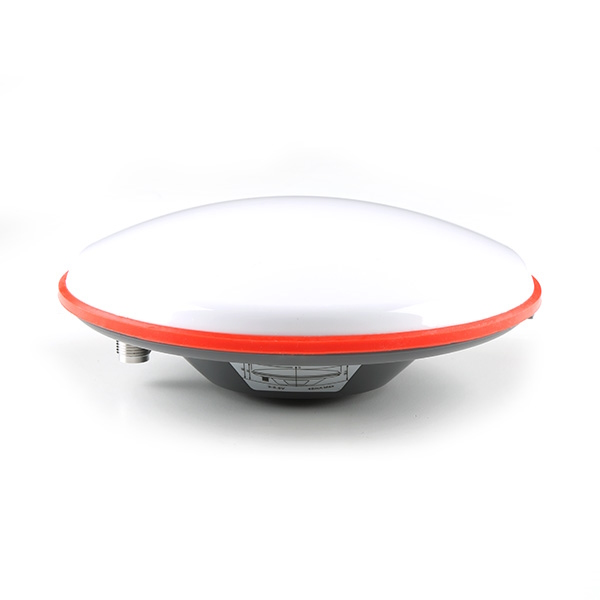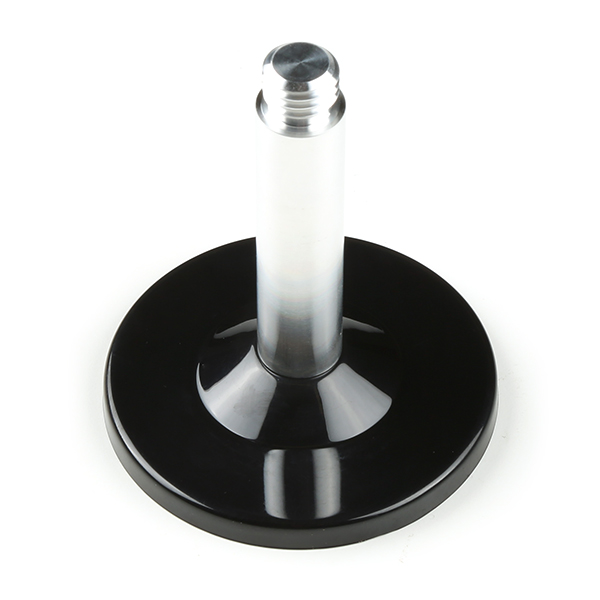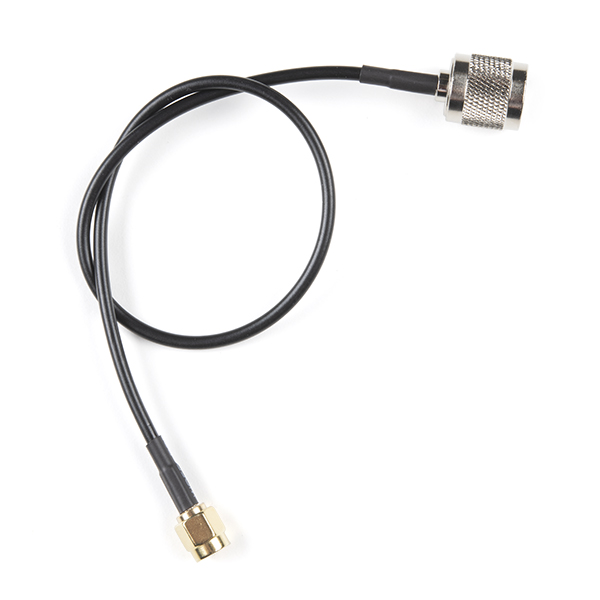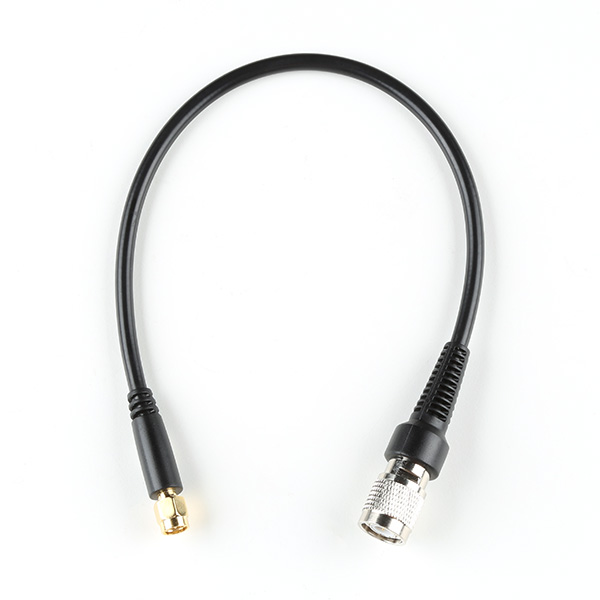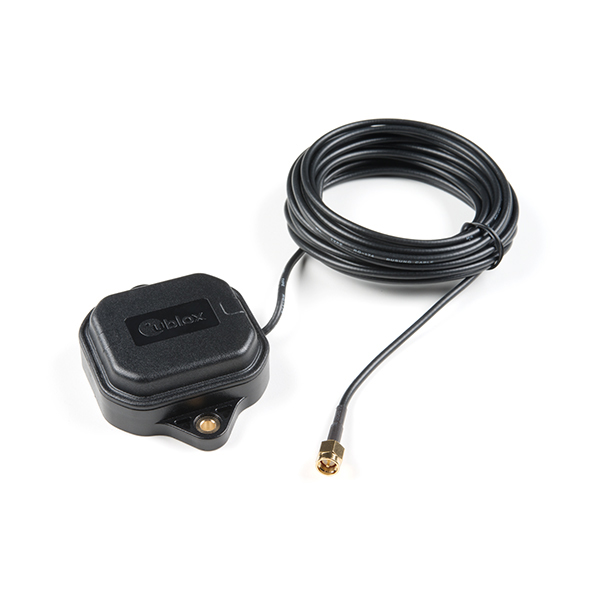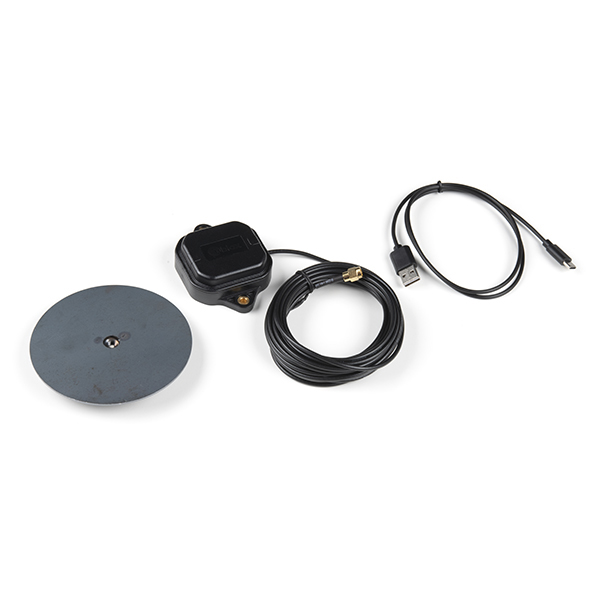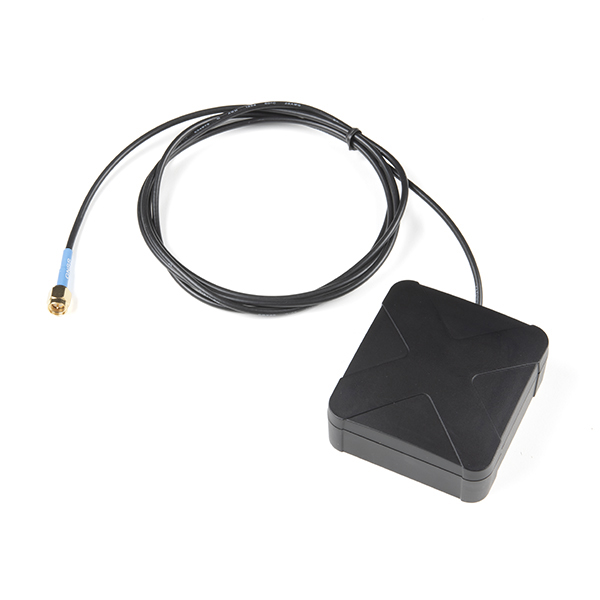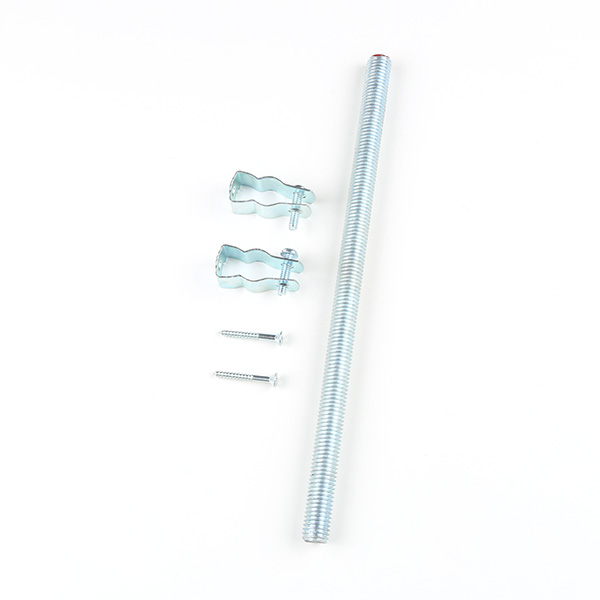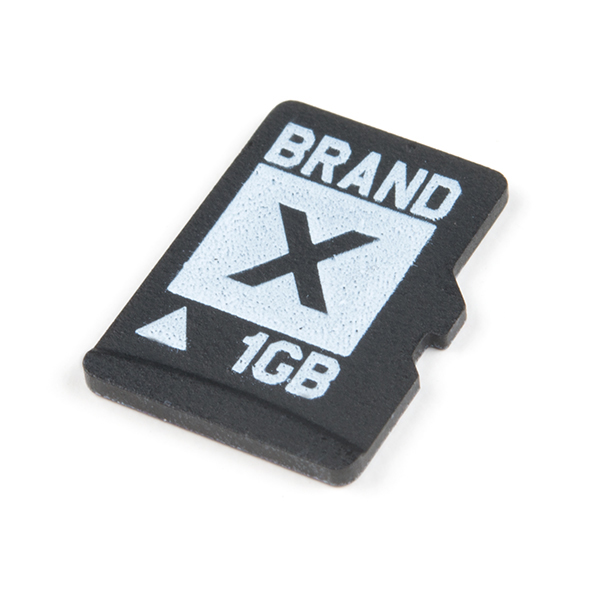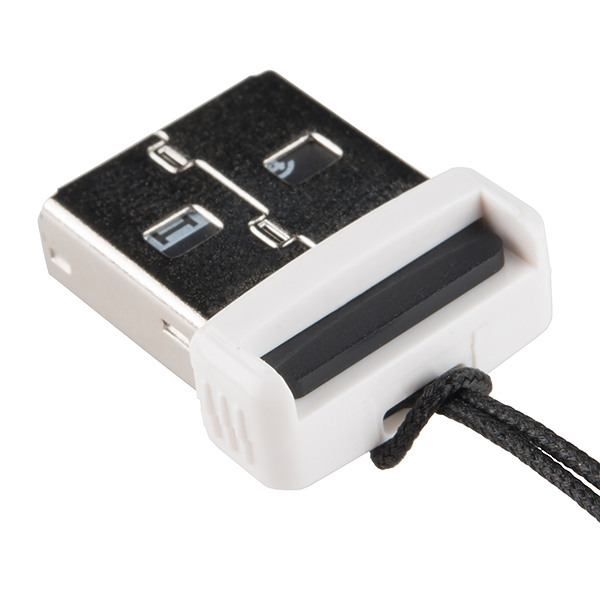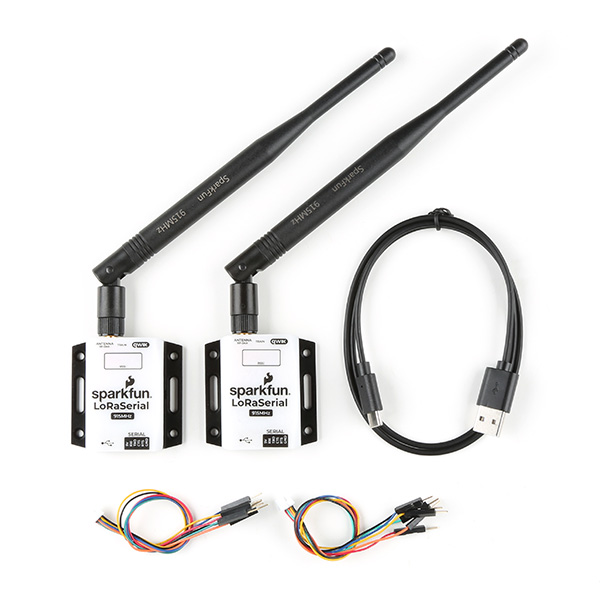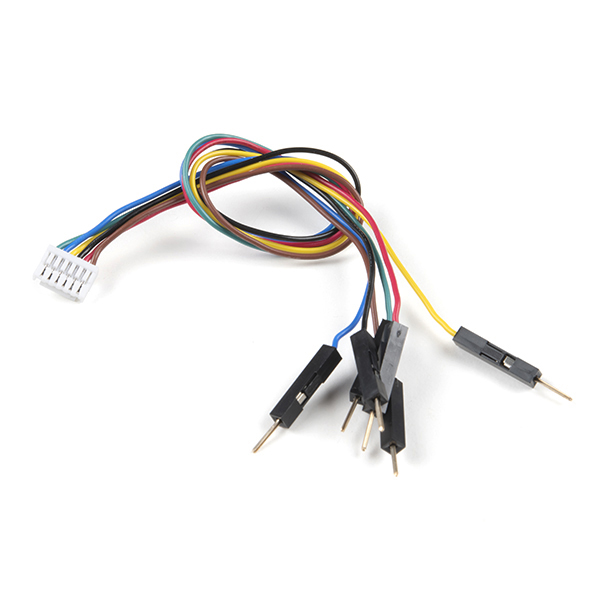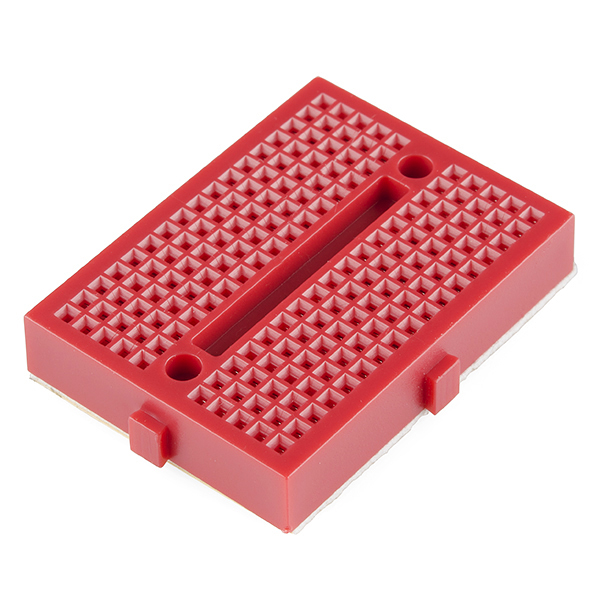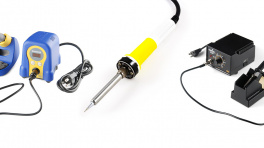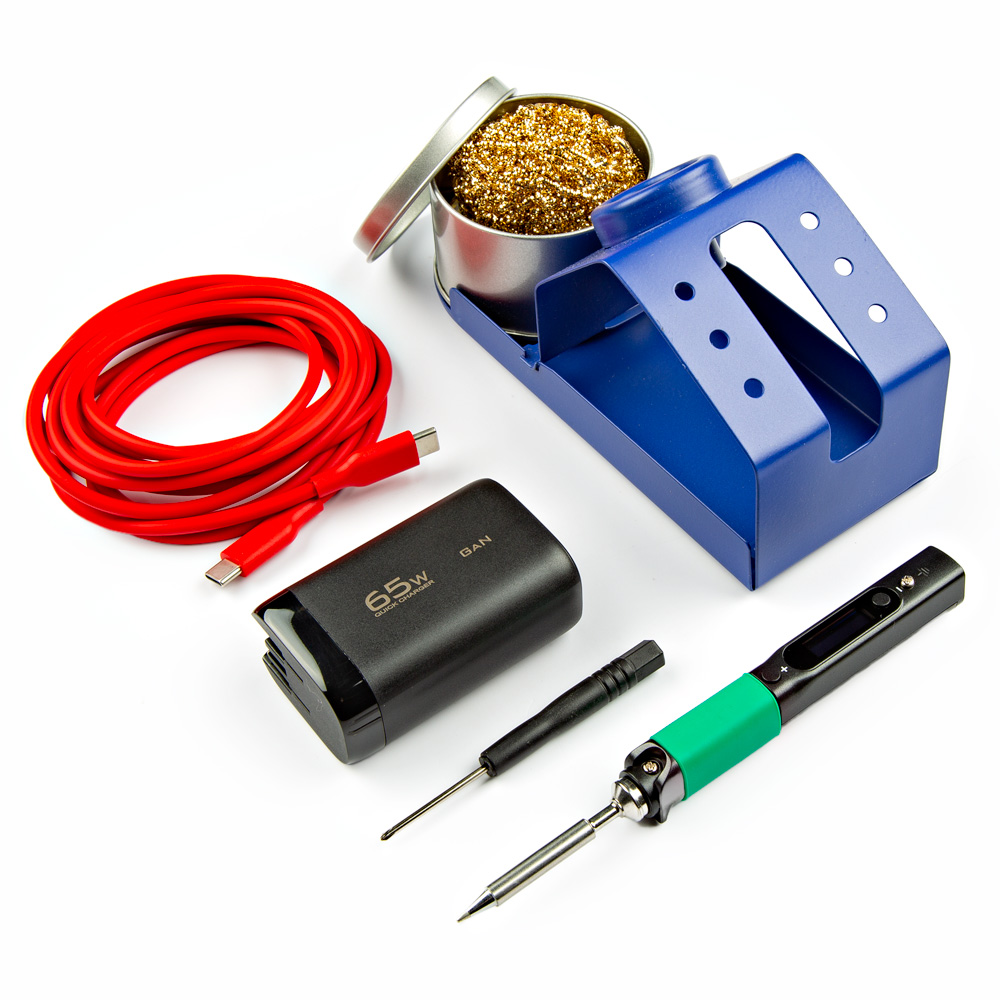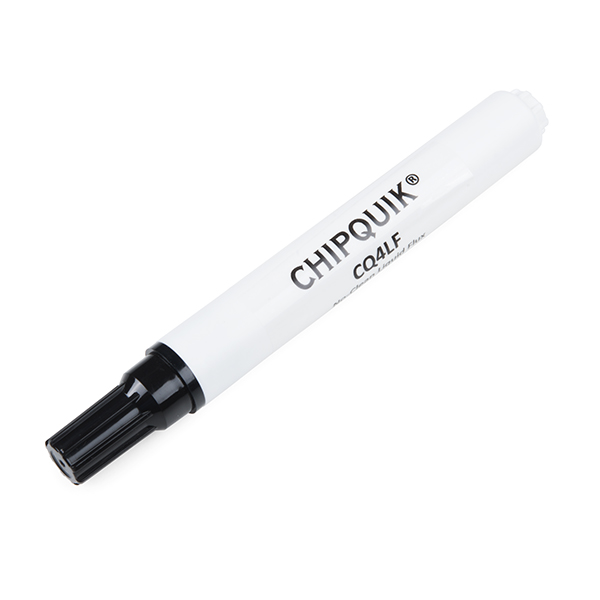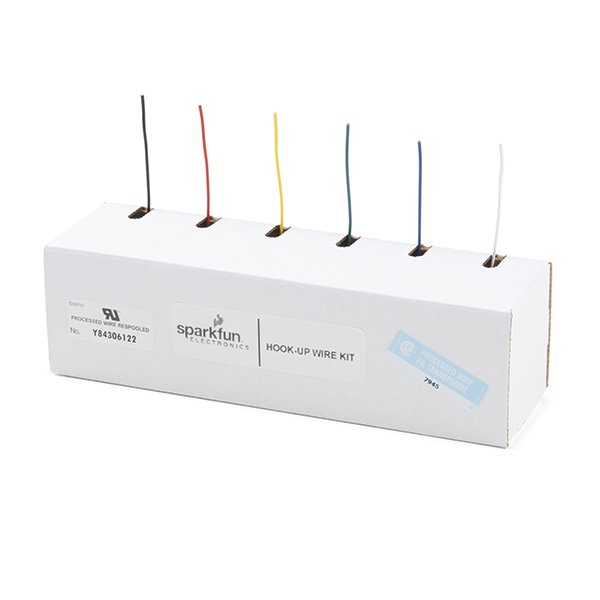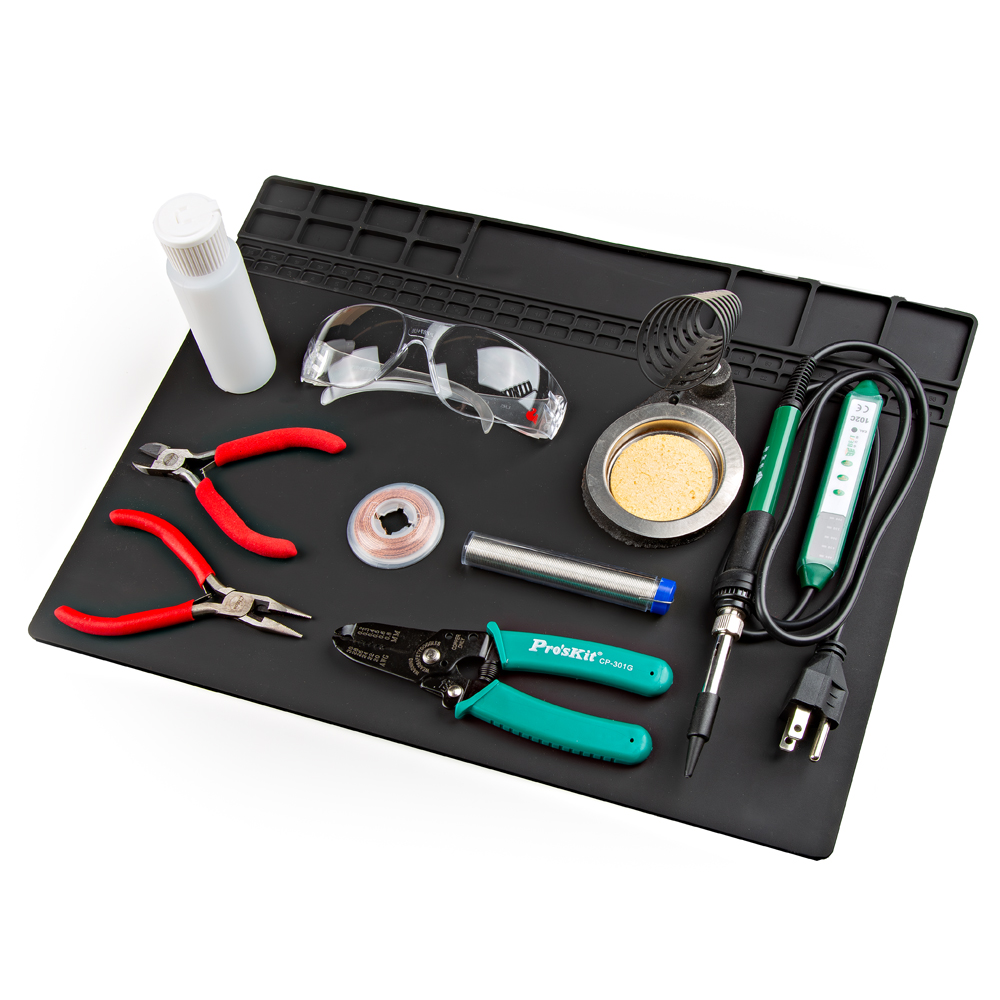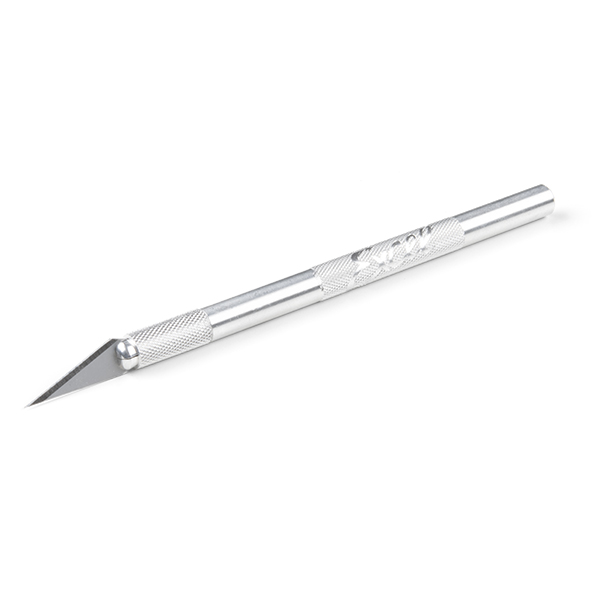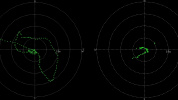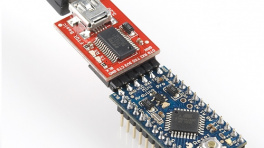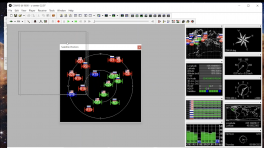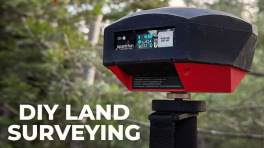Danger
ESD Sensitivity
The mosaic-X5 module is sensitive to ESD. Use a proper grounding system to make sure that the working surface and the components are at the same electric potential.
ESD Precaution
As recommended by the manufacturer, we highly recommend that users take the necessary precautions to avoid damaging their module.
- The Tri-band GNSS RTK breakout board features ESD protection on the USB-C connector and breakout's I/O:
- USB data lines
- I/O PTH pads
- JST connector's pins
- The mosaic-X5 module features internal ESD protection to the
ANT_1antenna input.
Active Antenna
Never inject an external DC voltage into the SMA connector for the GPS antenna, as it may damage the mosaic-X5 module. For instance, when using a splitter to distribute the antenna signal to several GNSS receivers, make sure that no more than one output of the splitter passes DC. Use DC-blocks otherwise.
Info
A 3 - 5.5V DC voltage can be applied to the main antenna from the VANT pin, obviating the need for an external antenna supply or bias-tee.
Introduction
-
mosaic-X5 GNSS Breakout
SKU: GPS-23088
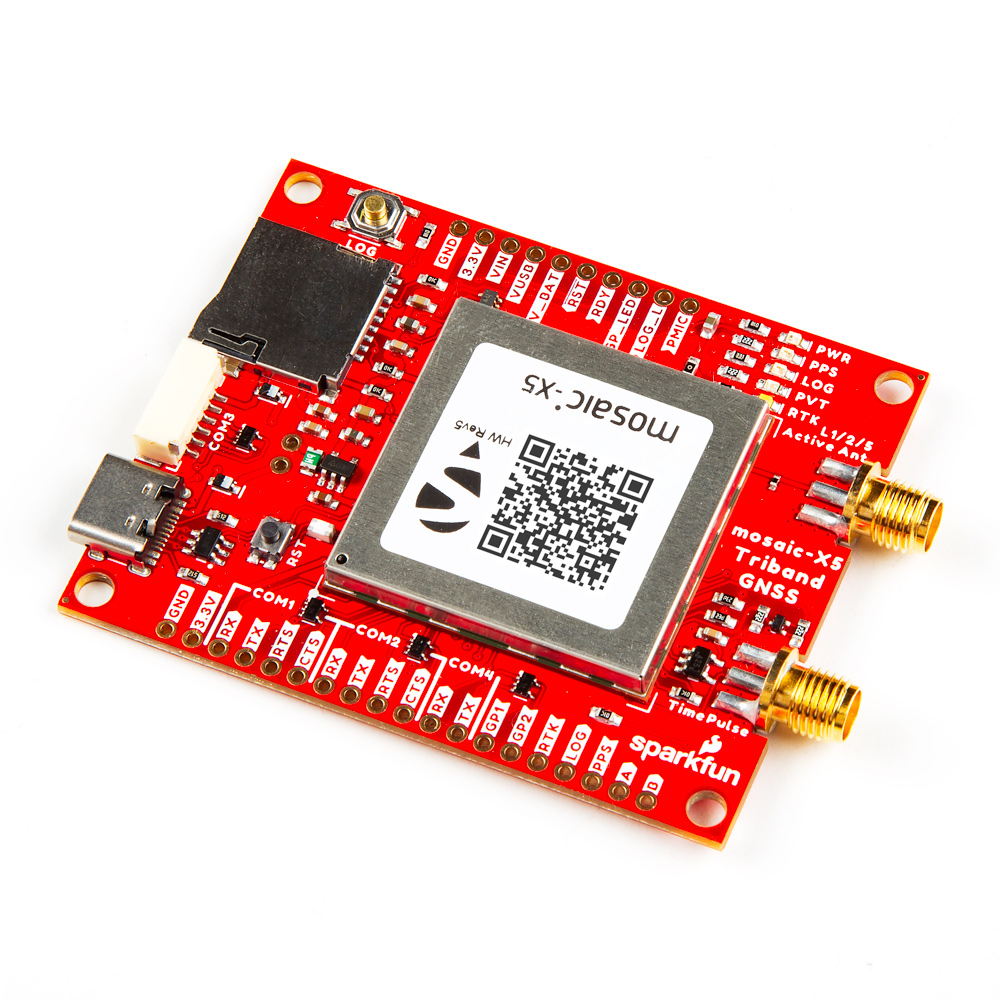

-
At the heart of the Triband GNSS RTK Breakout is Septentrio's mosaic-X5, their most compact, ultra-low power, multi-band, multi-constellation, high-precision GNSS receiver. The receiver supports the GPS (USA), GLONASS (Russia), Beidou (China), Galileo (Europe), and NavIC (India) constellations, including regional systems (i.e. SBAS and QZSS). With its Real Time Kinematics (RTK) capabilities, the module can achieve a horizontal accuracy of 6mm (~0.25in), vertical accuracy of 1cm (~0.4in) using RTK, and timing precision of 5ns (5 billionths of a second). It also features Septentrio's unique AIM+ technology for interference mitigation and anti-spoofing, ensuring best-in-class reliability and scalable position accuracy.
The mosaic-X5 is a sophisticated chip running an internal web server that can be accessed through the USB interface with a standard browser using a Linux/Windows computer. Septentrio also provides dozens of video tutorials to guide users through the configuration settings of their GNSS receivers utilizing the web interface.
Beyond the capabilities of the mosaic-X5 module, this board is seamless to operate with no programming skills required. Gone are the times when a microcontroller was required to interface with the GNSS receiver and log data to an SD card. The mosaic-X5 Triband GNSS RTK Breakout can start/stop logging data, without a single line of code, just utilizing a simple button.
This breakout board is a perfect middle ground for users who would like to integrate the mosaic-X5 module into a project/enclosure with access to a majority of the module's available pins, similar to Septentrio's developer kit, but in the smaller form factor of their evaluation kit. Or maybe... you just needed a PPS output at a 3.3V logic level. Please, check out the rest ouf our guide for more details on the capabilities of this board (that we couldn't fit in this product description).
Important: Read Before Use!
ESD Sensitivity
The mosaic-X5 module is sensitive to ESD. Use a proper grounding system to make sure that the working surface and the components are at the same electric potential.
ESD Precaution
As recommended by the manufacturer, we highly recommend that users take the necessary precautions to avoid damaging their module.
- The Tri-band GNSS RTK breakout board features ESD protection on the USB-C connector and breakout's I/O:
- USB data lines
- I/O PTH pads
- JST connector's pins
- The mosaic-X5 module features internal ESD protection to the
ANT_1antenna input.
Active Antenna
Never inject an external DC voltage into the SMA connector for the GPS antenna, as it may damage the mosaic-X5 module. For instance, when using a splitter to distribute the antenna signal to several GNSS receivers, make sure that no more than one output of the splitter passes DC. Use DC-blocks otherwise.
Info
A 3 - 5.5V DC voltage can be applied to the main antenna from the VANT pin, obviating the need for an external antenna supply or bias-tee.
Product Comparison
Below is a simple comparison table between our breakout board and Septentrio's development and evaluation kits:
mosaic-X5 Development Kit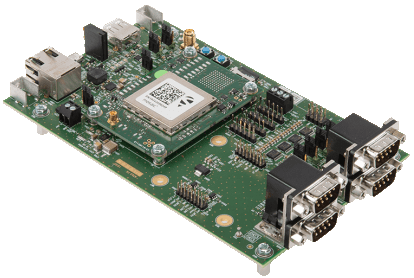
|
mosaic-go Evaluation Kit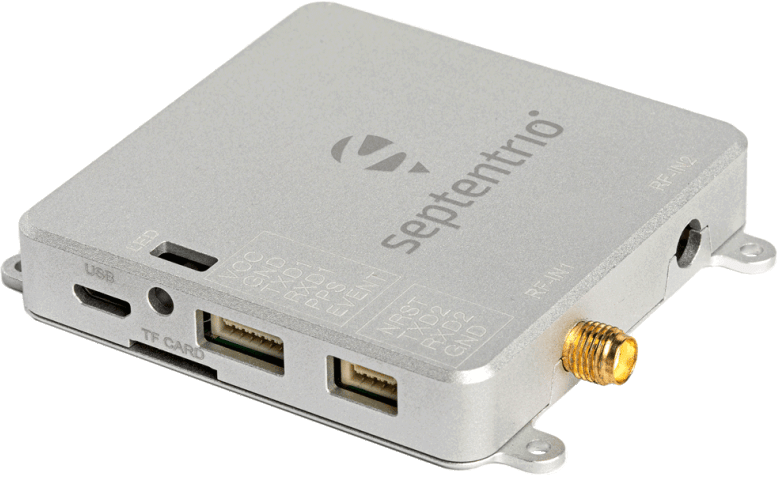
|
mosaic-X5 GNSS Breakout
|
RTK mosaic-X5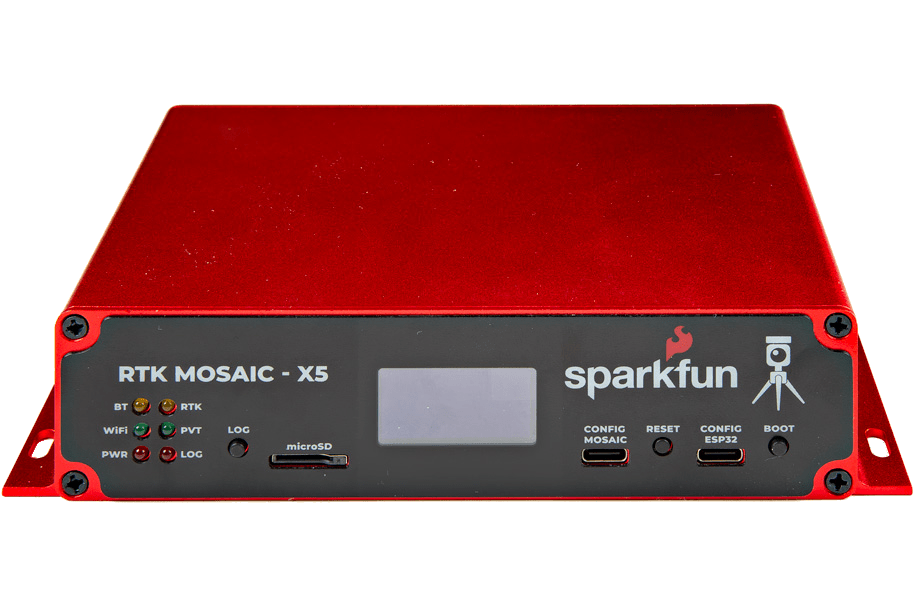
|
|
|---|---|---|---|---|
| GNSS Antenna | Dual |
Single (mosaic-X5) Dual (mosaic-H) |
Single | Single |
| USB Connector | micro-B | micro-B | Type-C | Type-C |
| Ethernet |
Yes 10/100 Base-T |
No | No |
Yes 10/100 Base-T |
| WiFi | No | No | No |
Yes - Network Bridge 10 Base-T |
| COM Ports | 4 | 2 | 4 |
1 - mosaic-X5 1 - ESP32 |
| µSD Card Slot | Yes | Yes | Yes | Yes |
| Reset/Log Buttons | Yes | No* | Yes | Yes |
| Logic-Level |
1.8V 3.3V |
3.3V | 3.3V |
3.3V 5V |
| PPS Signal | Header Pin | 6-Pin JST Connector | SMA Connector | Screw Terminal |
| Enclosure Material | N/A | Metal | N/A | Aluminum |
| Dimensions | N/A | 71 x 59 x 12mm ± 1mm | 70.9 x 50.8 x 8mm |
180.6 x 101.8 x 41mm Enclosure Only |
| Weight | N/A | 58g ± 1g | 22.6g |
415.15g Enclosure Only |
mosaic-go Evaluation Kit
The reset pin is exposed on 4-pin JST connector and the log pin is connected to the latch pin of the SD card slot.
Required Materials
To get started, users will need a few items. Now some users may already have a few of these items, feel free to modify your cart accordingly.
-
Computer with an operating system (OS) that is compatible with all the software installation requirements (1)
Software Compatibility
The RxTools software suite from Septentrio, automatically installs the required USB-over-Ethernet driver and provides users with an interface for the receiver configuration, monitoring, data logging, and analysis. However, it only appears to be available for Windows and Linux operating systems.
-
USB 3.1 Cable A to C - 3 Foot - Used to interface with the mosaic-X5 GNSS Breakout (2)
- SparkFun Tri-band GNSS RTK Breakout - mosaic-X5 (3)
- GNSS Multi-Band L1/L2/L5 Surveying Antenna
- A list of the compatible GNSS receiver software, is provided on the Septentrio website.
- If your computer doesn't have a USB-A slot, then choose an appropriate cable or adapter.
- For the best performance, use a compatible L1/L2/L5 GNSS antenna.
ESD Protection
The Septentrio mosaic-X5 module is sensitive to ESD. Use a proper grounding system to make sure that the working surface and the components are at the same electric potential.
Antennas & Accessories
For the best performance, we recommend users choose a compatible L1/L2/L5 (tri-band) GNSS antenna and utilize a low-loss cable. For additional options, please check out the GPS Antenna category of our product catalog.
-
GNSS Magnetic Antenna Mount - 5/8" 11-TPI
PRT-212575/8"-11 TPI
This product is meant to be used with our surveying antennas. To mount those antennas to a camera tripod, check out our tripod adapter.
-
GNSS Antenna Mounting Hardware Kit
KIT-221975/8"-11 TPI
This product is meant to be used with our surveying antennas. To mount those antennas to a camera tripod, check out our tripod adapter.
-
GPS Antenna Ground Plate
GPS-175191/4"-20 TPI
This product is meant to be used with our magnetic antennas and a camera tripod with a standard ¼"-20 UNC camera mounting screw.
Data Logging
The Septentrio mosaic-X5 module is capable of logging data to an µSD card. Please check out the memory cards and accessories in our product catalog.
JST Cable & Transceivers
In remote applications, users may need to utilize one of our radio transceivers for RTK correction data. Users may also find our breadboard cable convenient for connecting your module to a development board.
Headers and Wiring
To add headers or hookup wires, users will need soldering equipment and headers/wire.
New to soldering?
Check out our How to Solder: Through-Hole Soldering tutorial for a quick introduction!
Jumper Modification
To modify the jumpers, users will need soldering equipment and/or a hobby knife.
New to jumper pads?
Check out our Jumper Pads and PCB Traces Tutorial for a quick introduction!
Suggested Reading
As a more sophisticated product, we will skip over the more fundamental tutorials (i.e. Ohm's Law and What is Electricity?). However, below are a few tutorials that may help users familiarize themselves with various aspects of the board.
Tip
Check out the www.gps.gov website to learn more about the U.S.-owned Global Positioning System (GPS) and the Global Navigation Satellite Systems (GNSS) of other countries.
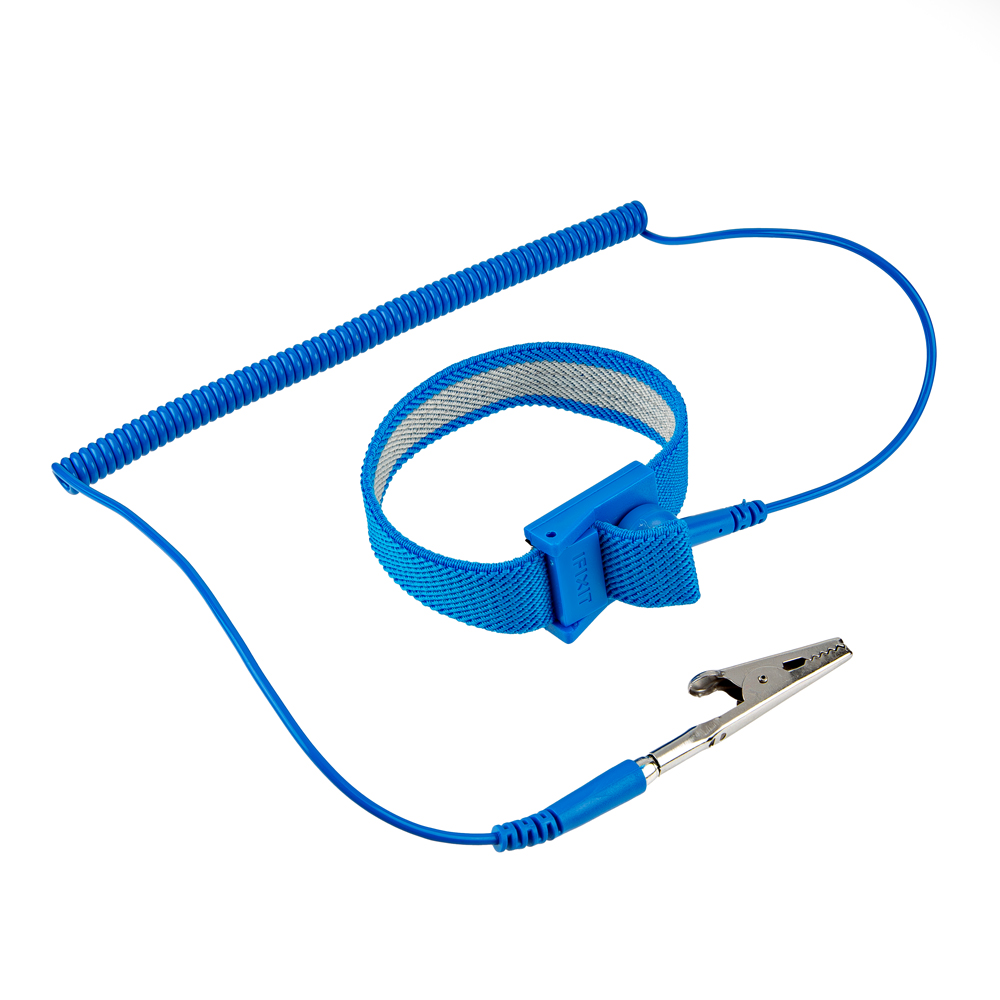
 Purchase from SparkFun
Purchase from SparkFun 
